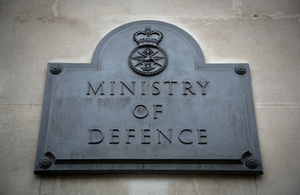The 75th anniversary of the sinking of HMT Lancastria
HMT Lancastria was sunk by enemy action on 17 June 1940, while engaged in the evacuation of British troops from France

Today (17 June 2015) marks the 75th anniversary of the UK’s greatest maritime disaster, in which more than 3,000 people lost their lives.
Two weeks after Dunkirk, HM Troopship (HMT) Lancastria was taking part in Operation Ariel, the evacuation of British nationals and troops from France. On 17 June 1940, a large number of people, mainly UK civilian refugees, embassy staff, RAF personnel and soldiers, were on board. At around 4pm, the ship was bombed by a German Ju-88 and sank within 20 minutes.
Lord Howe, the Minister of State for Defence, said:
The sinking of HMT Lancastria remains the United Kingdom’s greatest maritime disaster and, although it occurred 75 years ago this week, the sacrifice of many thousands of servicemen and civilians, and the fortitude of those who were saved that day, must never be forgotten. The MOD regards the Lancastria as a ‘military maritime grave’ and the crew are honoured by memorials in Glasgow, where the ship was built, in St Nazaire, and in the National Memorial Arboretum, among others.
The names of the merchant seamen who lost their lives are commemorated at the Tower Hill Memorial and the Commonwealth War Graves Commission maintains the graves of over 1,000 of those who perished. Additionally there is a wooden plaque in the church of St Katherine Cree in London and remaining survivors were also awarded a special medal by the Scottish Government in 2008.
As the wreck lies off the port of St Nazaire, in French territorial waters, it is not eligible for protection under the Protection of Military Remains Act 1986. However, on being asked in 2006, the French government gave the wreck legal protection to the same level that the UK would be able to do were that possible.
All known MOD records relating to the Lancastria are available at the National Archives at Kew.